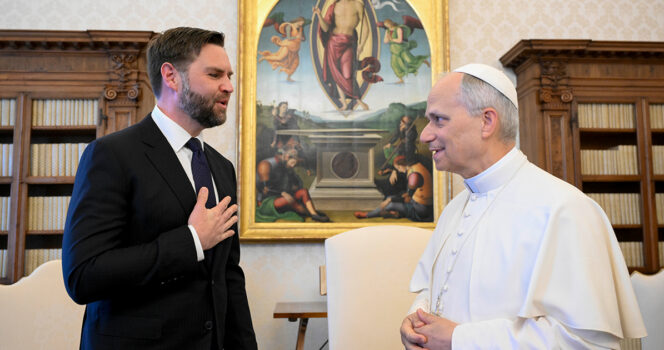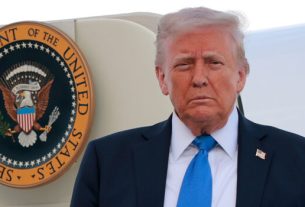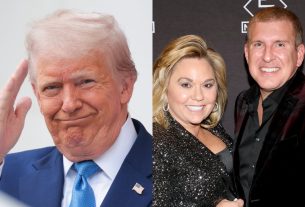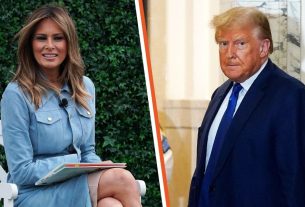On May 18, 2025, U.S. Vice President JD Vance participated in a historic meeting with Pope Leo XIV following the pontiff’s inaugural mass at the Vatican. The event marked a significant moment in diplomatic and religious relations, as Pope Leo XIV is the first American-born pope in Catholic history.
However, media coverage and social media commentary following the encounter have sparked debate over certain gestures and remarks made during the visit. While some online users perceived Vice President Vance’s behavior as a deviation from traditional Vatican protocol, others have emphasized the importance of context and cultural nuance in international diplomacy.
This article presents a fact-based overview of the visit, the relevant etiquette when meeting the pope, and the verified public response—without engaging in speculation or inflammatory commentary.
The Context: A Historic Meeting
Vice President JD Vance, accompanied by his wife Usha Vance and U.S. Secretary of State Marco Rubio, visited the Vatican as part of a scheduled diplomatic mission to discuss international humanitarian and security issues. The meeting occurred the day after Pope Leo XIV’s inaugural mass, an event attended by heads of state, religious leaders, and global dignitaries.
Photos from the meeting were officially shared by the White House and the Vatican Press Office, confirming that the encounter took place in a formal setting in accordance with standard protocol for visiting dignitaries.

Vatican Protocol: Etiquette When Meeting the Pope
Meeting the pope is governed by long-standing customs that reflect the solemnity of the Holy See. According to Vatican protocol and sources such as MetroWest Daily News and the Catholic News Agency, expected etiquette includes:
- Addressing the pope as “Your Holiness”
- Waiting for the pope to initiate any physical contact
- Speaking only after a formal introduction
- Wearing conservative attire (dark suits for men and modest dress for women)
- Avoiding unnecessary physical gestures beyond a handshake
While the Vatican does not impose harsh penalties for informal conduct, it maintains these guidelines to preserve the sanctity and symbolism of the papal office.
:max_bytes(150000):strip_icc():focal(749x0:751x2)/pope-leo-1st-press-conference-051225-2-08f089b173654c87aaae5b2cbc5802b6.jpg)
The Gesture in Question: A Brief Elbow Pat
During the greeting, video footage and photographs captured Vice President Vance briefly patting Pope Leo XIV’s elbow after a handshake and short exchange. The gesture, though non-confrontational, drew a mix of public reactions, especially on social media platforms.
Some users commented that the physical touch may have deviated from established protocol, while others interpreted it as a friendly but culturally unfamiliar gesture in a highly formal setting.
As of this writing, neither the Vatican nor the White House has issued a formal statement suggesting that the gesture constituted a breach of decorum. Vatican officials typically refrain from public critique of visiting dignitaries unless protocol has been severely violated.
The Public Response: Mixed Reactions Online
Following the release of the photos and video footage, reactions circulated on social media—some critical, some neutral, and others supportive.
Critics suggested that the elbow pat lacked awareness of papal etiquette, while others emphasized that the act was likely spontaneous and non-malicious. Online discourse also included calls to maintain respectful tone and language when discussing global leaders and their religious or cultural interactions.
As highlighted by the Pew Research Center, differing cultural norms regarding physical gestures are often misinterpreted across borders, and public figures are increasingly advised to engage in cross-cultural sensitivity training.
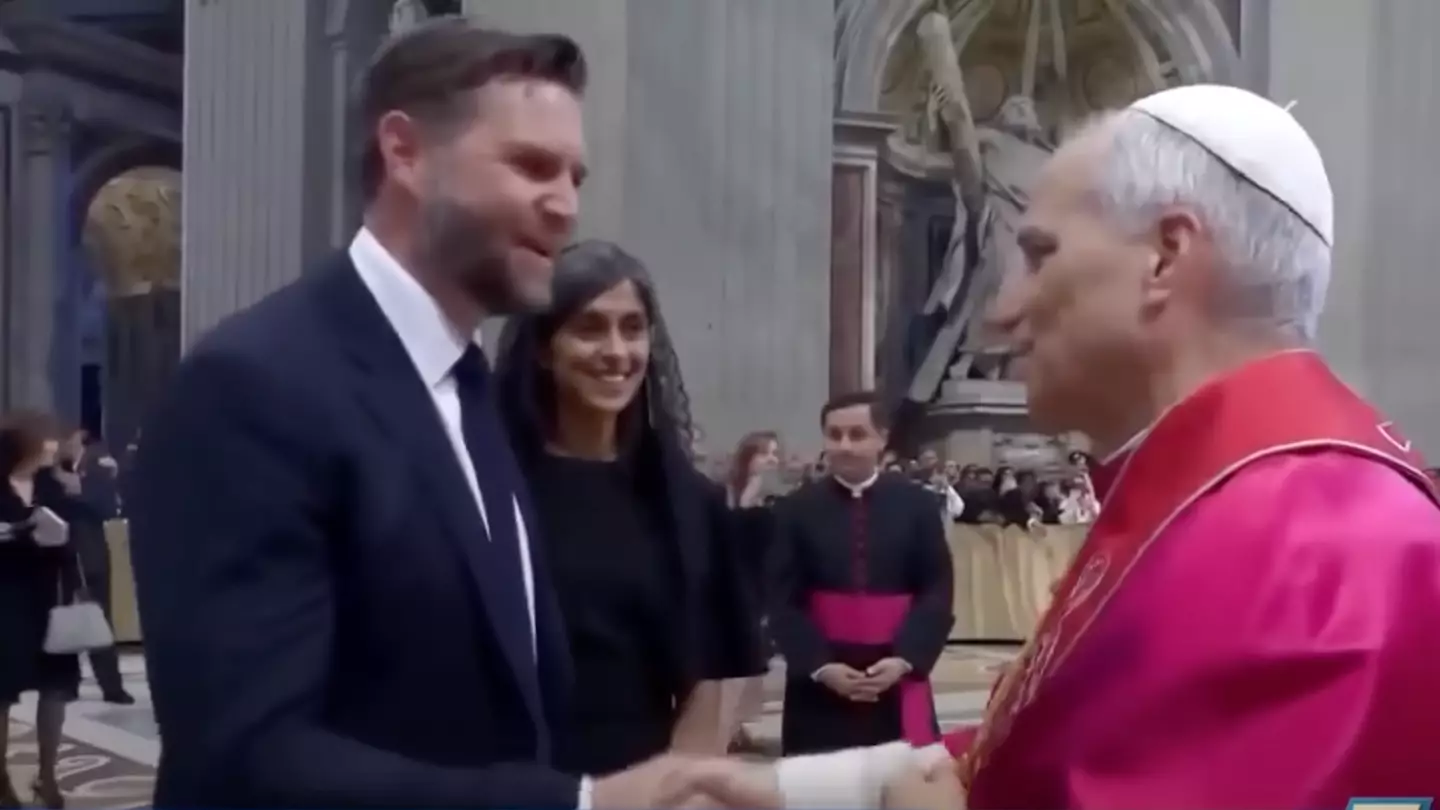
Clarifying the Political Backdrop
Much of the discussion around the meeting has been framed in the context of Vice President Vance’s previous policy positions and earlier statements regarding religious values, immigration, and Catholic teaching. Vance, a convert to Catholicism, has spoken publicly about how his faith informs his worldview.
In early 2025, Vance told Fox News that his belief in “prioritizing family and community” stems from a Christian ethic. The remarks drew differing interpretations, particularly in light of past comments made by Cardinal Robert Prevost—now Pope Leo XIV—who at the time advocated for a more universalist interpretation of Christian love and inclusion.
While an unauthenticated social media post in 2025 attributed to Cardinal Prevost responded critically to Vance’s interpretation, no official confirmation was made linking the message to the then-cardinal. Reputable outlets such as The New York Times noted that the account in question was connected to contact details believed to be associated with Prevost, but this remains unverified.
Since ascending to the papacy, Pope Leo XIV has not issued any statements criticizing Vance or other U.S. officials.

Vice President Vance’s Clarification
In a recent interview, JD Vance addressed the speculation surrounding his meeting with Pope Leo XIV. He emphasized that his faith remains an important personal commitment, and that he respects the leadership of the Catholic Church regardless of political differences.
“I think it would be better for all of us if we allowed the Church to be about the saving of souls and didn’t try to fit it into a pre-ordained political box,” Vance stated in his interview with Fox News.
He added that while he may not agree with every papal opinion, he continues to pray for Pope Leo XIV and the Church.
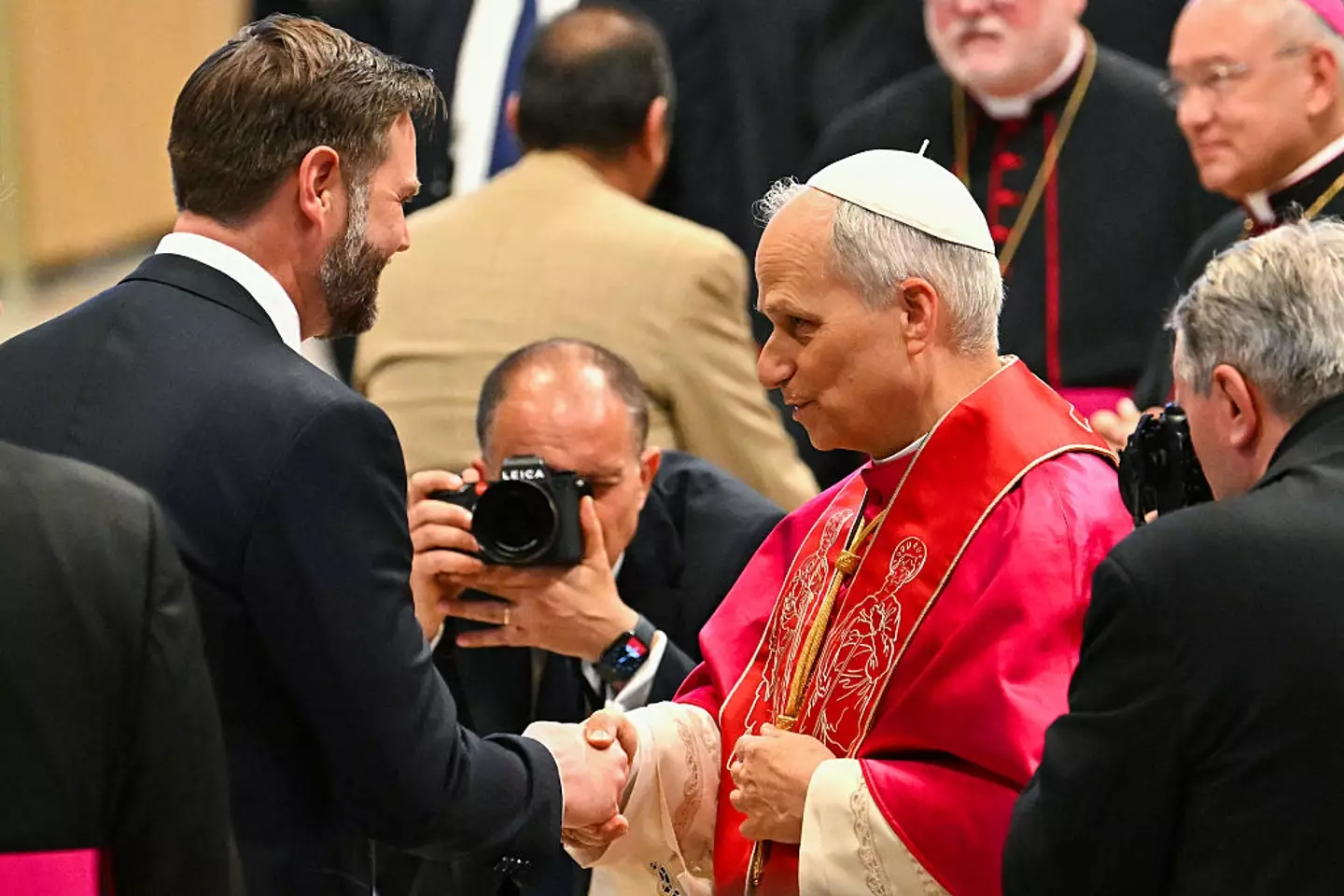
Reaffirming the Role of Diplomacy
Meetings between religious leaders and political figures are inherently complex, often shaped by protocol, symbolism, and international norms. While etiquette is important, so is mutual respect, cultural understanding, and the intent behind the interaction.
As noted by Reuters and The Catholic Herald, Pope Leo XIV’s pontificate is expected to focus on themes such as global peace, interfaith dialogue, and refugee protection—all issues that require ongoing engagement with government officials worldwide.
Vice President Vance’s visit to the Vatican, including meetings with Pope Leo and U.S. Secretary of State Marco Rubio, also included discussions related to diplomatic outreach in Eastern Europe, specifically surrounding the conflict between Russia and Ukraine, according to U.S. State Department briefings.

Conclusion: A Moment of Faith and Diplomacy
The meeting between Vice President JD Vance and Pope Leo XIV represents a significant occasion in contemporary international relations and faith diplomacy. While public reactions varied, the overall tone of the event remained respectful and cordial, as confirmed by both the White House and Vatican News.
In a world of rapidly shared images and opinions, it’s essential to approach such moments with factual accuracy, cultural awareness, and respectful interpretation. Global leaders, whether religious or political, represent millions of people and traditions—and it’s through dialogue, understanding, and humility that lasting relationships are built.
